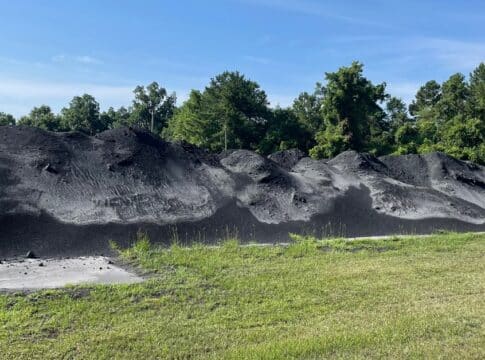North America’s Largest Biochar Plant Announced In Canada
A consortium of Canadian and French companies, including Airex Energy, Groupe Rémabec, and SUEZ, are investing C$80 million to construct North America’s largest biochar production facility.
This initiative highlights the growing global recognition of biochar’s potential in carbon sequestration and soil enhancement.
The plant will be located along the north shore of the Saint Lawrence River in Port-Cartier, Quebec, Canada.
The Quebec Biochar Plant: A Major Step in Canada’s Decarbonization Efforts
The Port-Cartier facility is Canada’s first industrial-scale biochar production plant, marking a significant milestone in the country’s net zero efforts.
The first phase of the plant will be finalized in 2024. It will focus on transforming forestry waste into biochar, contributing to a circular economy, and playing a crucial role in the fight against climate change.
With an initial production capacity of 10,000 tonnes per year, the plant will triple its annual production capacity by 2026. This makes it the largest biochar plant in North America.
The consortium aims to produce 350,000 tonnes of biochar by 2035.
They have identified locations in Europe and Africa where they can access the input to produce biochar, as well as potential buyers.
The Project’s Impact and Plans
The facility, owned by CARBONITY, a joint venture equally owned by the three partners, will employ 75 people locally. It will produce carbon-rich biochar with high environmental qualities from the residual biomass of Groupe Rémabec’s operations.
The project will sequester 75,000 tonnes of carbon per year.
By sequestering carbon, biochar production will generate guaranteed, certified carbon credits. First Climate will then sell them on the voluntary carbon market.
This project became possible thanks to the financial participation of the Quebec and Canadian governments. A federal official commented on this milestone, the Minister of Sport and Minister responsible for CED, said that:
“Government of Canada has made concrete commitments to demonstrate that a strong economy and a healthy environment go hand-in-hand. That is why Canada Economic Development for Quebec Regions (CED) is granting a repayable contribution of $3M to CARBONITY for its set-up project in Port-Cartier.”
Biochar: A Powerful Tool for Carbon Sequestration and Soil Enhancement
Biochar is a charcoal-like substance produced from plant matter. It’s created through a process called pyrolysis, where organic material is heated in a high-temperature, low-oxygen environment.
The result is a stable form of carbon that resists decomposition, effectively locking away carbon that would otherwise return to the atmosphere. When added to soil, biochar can significantly improve soil health, enhancing water retention, nutrient availability, and microbial activity. All these lead to increased crop productivity.
Moreover, the production of biochar can generate Carbon Dioxide Removal (CDR) carbon credits. These credits can be sold or traded, providing an additional revenue stream for biochar producers and incentivizing further carbon sequestration efforts.
Airex earlier this year raised $38M to increase capacity at another Quebec facility that torrefies biomass.
A Shift in the Carbon Credits Market
The construction of the Quebec biochar plant signifies a shift in the carbon credits market. As countries and corporations strive to achieve their carbon neutrality goals, the demand for effective carbon offsetting solutions is growing.
Biochar production offers a tangible, measurable way to offset carbon emissions. The carbon credits generated from this process can attract significant interest from environmentally conscious investors and corporations.
Used as a soil amendment, biochar offers several benefits, including carbon sequestration, increased nutrient retention, and optimized soil aeration and drainage. Its properties allow it to contribute to soil regeneration, limit the use of fertilizers and sustain water resources.
When added to concrete or asphalt formulations, biochar brings new functionalities to the final material while helping to reduce its carbon footprint, a key issue for the construction sector.
Lastly, the production of biochar at high-temperature and with oxygen-free pyrolysis will generate surplus energy in the form of steam or pyrolysis oil, which is reusable on site.
In summary, here are just some of the potential industrial uses of biochar:
Source: Osman et al. (2022). Environ Chem Lett 20. https://doi.org/10.1007/s10311-022-01424-x
The Future of Biochar and Carbon Management
The emergence of North America’s largest biochar plant in Quebec is a milestone in the world’s journey toward sustainable carbon management. It highlights the potential of biochar as a solution for carbon sequestration, waste management, and soil enhancement.
With the establishment of the Port-Cartier facility, the future of biochar and carbon management looks promising. The project shows the potential of biochar in sequestering carbon while setting a precedent for future initiatives in the sector.
As we continue to grapple with the challenges of climate change, such initiatives offer a beacon of hope, showing us that with innovation and commitment, a sustainable future is within our reach.
The post North America’s Largest Biochar Plant Announced In Canada appeared first on Carbon Credits.



